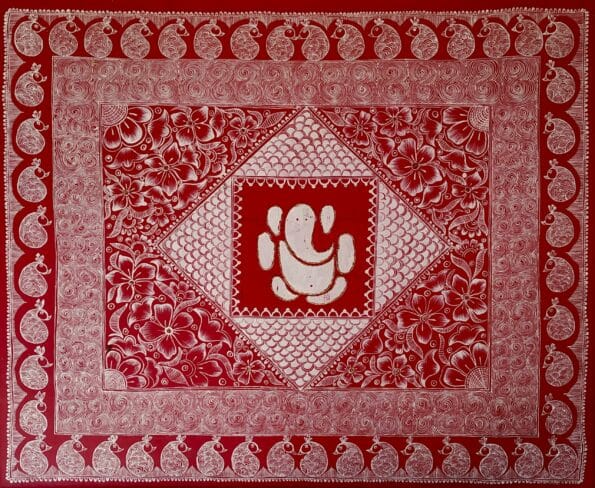Uttarakhand, located in the Himalayas, is known not only for its magnificent vistas, but also for its rich cultural legacy. Aipan is a mesmerizing treasure that beautifully portrays the essence of the local culture among the numerous traditional art forms that flourish in this region.

AIPAN'S ARTISTRY: INTRICATE PATTERNS AND SYMBOLISM

Aipan, also known as Alpana or Rangoli, is a traditional art with ancient origins that has survived the years. It is distinguished by its beautifully created patterns, which are made from a paste of white rice flour and water. These patterns, which are frequently symmetrical and geometric in nature, are more than just beautiful features; they have profound symbolism. From pictures of natural wonders to deities and cultural icons, each theme carries a narrative waiting to be discovered.
AIPAN'S DUAL FUNCTION: ARTISTIC EXPRESSION AND RITUALISTIC IMPORTANCE
Aside from its aesthetic appeal, Aipan has a dual function that combines arts and spirituality. It graces doorsteps and courtyards at festivals, weddings, and other momentous occasions, infusing areas with a sense of warmth and friendliness. However, It is more than just surface beauty; it is a method of visual communication. It delivers themes from Hindu mythology, folk tales, and local traditions through its elaborate shapes, making it a unique method of storytelling.

AIPAN ARTISTRY: PROCESS AND CRAFTSMANSHIP

The creation of Aipan is a fascinating spectacle. Artists draw beautiful designs on the ground using their fingers or a tool called “kalam.” The artist’s knowledge of their skill is showcased via the rhythmic movements and precision required, making each product a labour of love and dedication.
AIPAN'S PRESERVATION: MEETING MODERN CHALLENGES
Aipan has struggled to remain relevant in the face of modernisation and changing lifestyles. However, a concerted movement to revitalize and protect this art form has evolved. Collaborations between artisans, community organizations, and government agencies are yielding initiatives such as workshops, exhibitions, and public awareness campaigns. These initiatives not only introduce Aipan to new generations, but also create a greater understanding of its cultural significance.

AIPAN'S TIMELESS CHARM: BRIDGING TRADITION AND MODERNITY

Aipan, as the thread that connects tradition and modernity, continues to decorate homes and hearts throughout Uttarakhand. Its elaborate decorations, profound meaning, and cultural significance reflect the soul of the region. As long as preservation efforts continue, Aipan’s mesmerizing beauty will remain an indelible part of Uttarakhand’s cultural fabric.
Finally, Aipan exhibits Uttarakhand’s rich cultural legacy and artistic prowess. Its elaborate designs, deep symbolism, and cultural significance make it an accurate representation of the region’s identity. As attempts to preserve and promote this beautiful artwork, this traditional art form will continue to decorate homes and hearts, bridging the gap between tradition and contemporary in Uttarakhand’s picturesque region.












